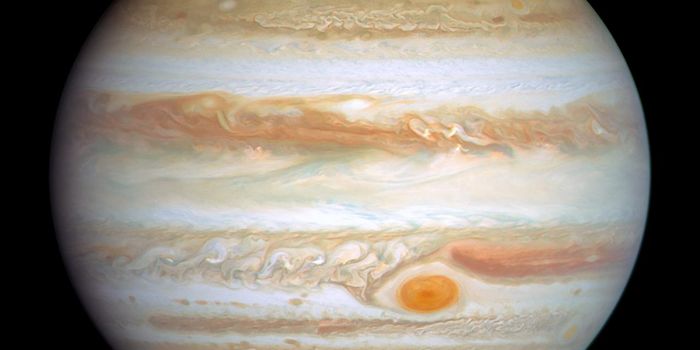Astronomers Probe the Disintegrating Exoplanet K2-22b for Answers
Astronomers around the globe are continuously scanning the cosmos to identify and study the unique characteristics of distant exoplanets. One of the ways they do this is to analyze transit events – the process in which an exoplanet passes in front of its host star during an observation by telescope and blocks a small percentage of the star’s light.
Because of the size difference between the exoplanet and its host star, the dip in starlight can seem insignificant at first glance, but professional astronomers know different. By carefully measuring these small dips in light during the transit event, an expert can identify the primary features of an exoplanet, including its size, makeup, and how long it takes to complete an orbit.
Image Credit: CfA/Mark A. Garlick
But not all exoplanets – or their transit events – are created equally. An exceedingly small subset of these produce asymmetric patterns in the light curves that astronomers record during transit events. It’s believed that these exoplanets are followed by dust tails caused by evaporation as they orbit their host star.
Related: Astronomers capture the formation of a young exoplanet
Astronomers refer to these oddities as ‘disintegrating exoplanets’ because that’s effectively what they appear to be; on the other hand, they’re poorly understood. Making things even more cryptic is the fact that disintegrating exoplanets are extraordinarily rare; out of approximately 3,800 known exoplanets, only three are known to match the profile of the disintegrating variety.
Given their elusive characteristics, it should come as no surprise that astronomers spend much of their time studying disintegrating exoplanets in an attempt to learn more about them. A more recent study involves K2-22b, a Neptune-sized disintegrating exoplanet that resides approximately 801 light-years away from Earth and orbits its host star once every nine hours.
In a paper published in The Astronomical Journal, a team of astronomers discuss their findings after performing 45 ground-based photometric observations of the K2-22 system from December 2016 to May 2017. The team used several wavelengths to observe K2-22b, and while they discovered both leading and trailing dust tails, they couldn’t accurately discern their compositions.
What they did find, however, was that the dust tails were comprised of fine dust grains and that the transit events exhibited light variability from one observation to the next. This, the astronomers say, is a sign that the dust trails could be evolving rapidly. If true, this could mean disintegrating exoplanets like K2-22b exhibit short lifetimes, and this could help to explain why they’re so elusive.
The findings underscore the importance of continuously observing unusual objects like K2-22b. As it would seem, they transform so rapidly that any lapses in observations can result in missed opportunities to learn about how and why they’ve come to exist.
Related: Barnard's star may host an exoplanet after all...
Will we ever fully understand what’s happening in the K2-22 system? It’s challenging to say, but perhaps future observatories like the James Webb Space Telescope will provide more answers.
Source: Phys.org, The Astronomical Journal









